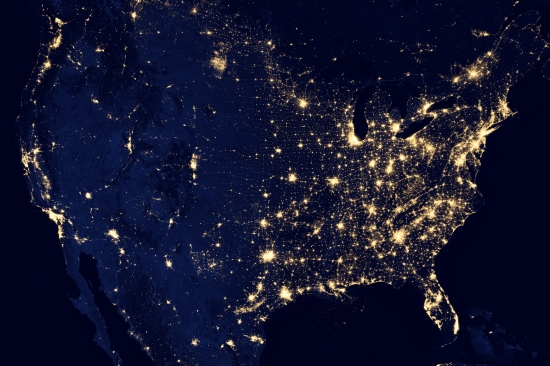Seen From Space, The Earth At Night Is Really, Really Beautiful

The new images were made possible by the “day-night band” of the Visible Infrared Imaging Radiometer Suite(VIIRS) aboard the Suomi NPP. It detects light in the spectrum from green to near-infrared, and can register light sources previously considered too dim, like lights from cities, wildfires, and even reflected moonlight.
The images make the cities of Earth look like collections of luminescent algae floating on the surface of the water. Particularly in the United States, you can see the interconnectedness of cities thanks to interstate highways, an imperfect grid that resembles slime mold branching out to different food sources. The images are stunning, but they’re also useful. The leader of the Earth Observation Group at NOAA’s National Geophysical Data Center, Chris Elvidge, says, “I’m always amazed at what city light images show us about human activity.”
He’s right. It can really teach us a lot. The data from the Suomi NPP can be used for a wide range of applications, from tracking fishing fleets to witnessing an increase in electric light in the hometown of a newly empowered dictator. Because that’s a thing that happens, apparently.
The images were released at the Fall Meeting of the American Geophysical Union, which has been revealing a lot of great things this week. You can see the images on NASA’s Earth Observatory site.
(via NASA)
- NASA also released a new map of the Moon’s gravity
- And they gave promising evidence that Mars could sustain life
- They’re also sending another rover to Mars in 2020
Have a tip we should know? tips@themarysue.com